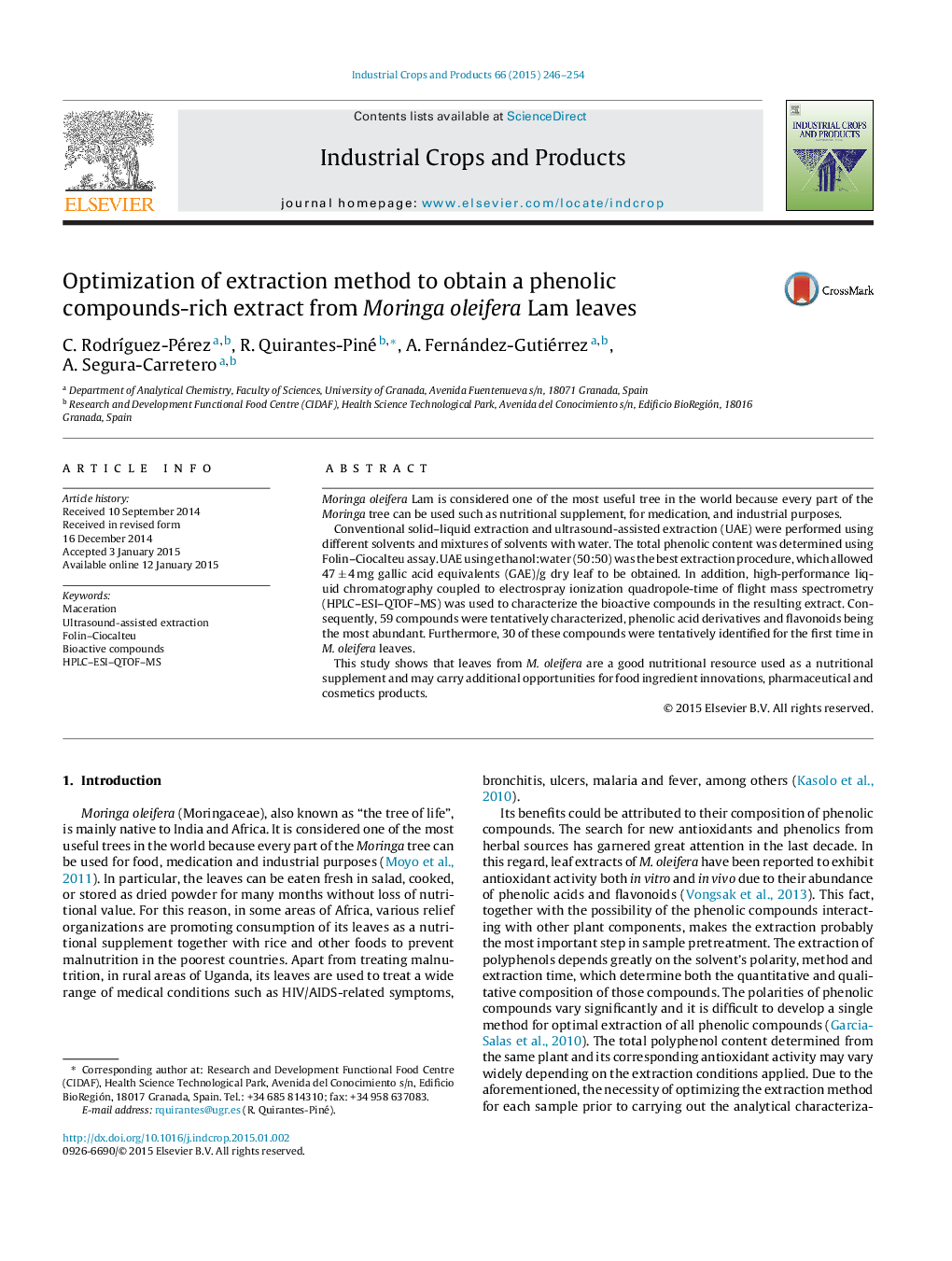| Article ID | Journal | Published Year | Pages | File Type |
|---|---|---|---|---|
| 4513199 | Industrial Crops and Products | 2015 | 9 Pages |
•Conventional solid–liquid and ultrasound-assisted extraction methods were performed.•Folin–Ciocalteu assay was used to determine the content of phenolic compounds.•Ultrasound-assisted extraction (ethanol:water 50:50) was the best extraction method.•Bioactive compounds from Moringa leaves were characterized by HPLC–ESI–QTOF–MS.•30 bioactive compounds were characterized for the first time in M. oleifera leaves.
Moringa oleifera Lam is considered one of the most useful tree in the world because every part of the Moringa tree can be used such as nutritional supplement, for medication, and industrial purposes.Conventional solid–liquid extraction and ultrasound-assisted extraction (UAE) were performed using different solvents and mixtures of solvents with water. The total phenolic content was determined using Folin–Ciocalteu assay. UAE using ethanol:water (50:50) was the best extraction procedure, which allowed 47 ± 4 mg gallic acid equivalents (GAE)/g dry leaf to be obtained. In addition, high-performance liquid chromatography coupled to electrospray ionization quadropole-time of flight mass spectrometry (HPLC–ESI–QTOF–MS) was used to characterize the bioactive compounds in the resulting extract. Consequently, 59 compounds were tentatively characterized, phenolic acid derivatives and flavonoids being the most abundant. Furthermore, 30 of these compounds were tentatively identified for the first time in M. oleifera leaves.This study shows that leaves from M. oleifera are a good nutritional resource used as a nutritional supplement and may carry additional opportunities for food ingredient innovations, pharmaceutical and cosmetics products.
Graphical abstractFigure optionsDownload full-size imageDownload as PowerPoint slide
